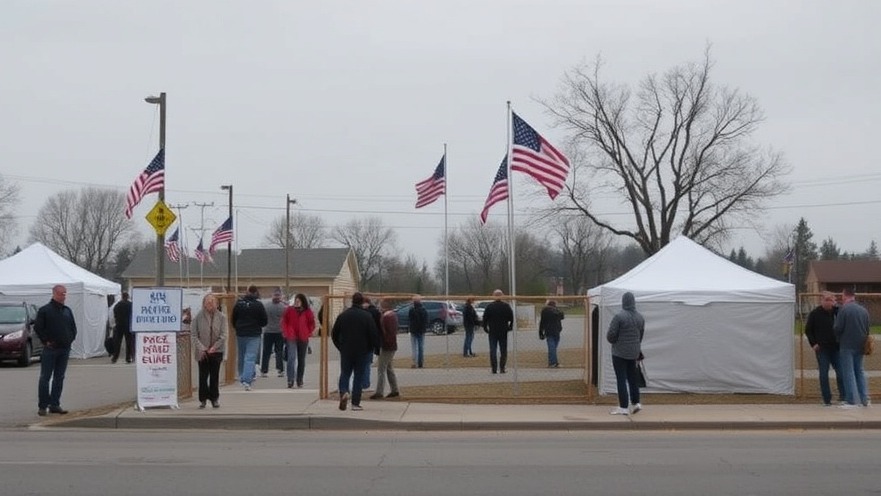
Texas Election Landscape Shifts Amid Polling Site Reductions
In a significant move that is reshaping the landscape of electoral participation, Tarrant County in Texas has announced the closure of over 100 polling sites for the upcoming elections. This decision comes in the context of a broader national discourse happening around voting methods, notably provoked by former President Donald Trump's ongoing critiques against mail-in voting. The reduction of polling venues may disproportionately affect the ability of voters in numerous communities, raising alarms among community leaders and advocates for voter accessibility.
The Impact of Polling Site Reductions on Voter Turnout
Reducing the number of polling sites is not merely an administrative change; it can have far-reaching implications for voter turnout. Studies suggest that when accessibility to polling places decreases, so does voter participation. Voters may face longer lines, increased wait times, and even difficulty in finding a location close to their residence. This frequently leads to frustration and, ultimately, voter apathy—an outcome that undermines the democratic process.
Why Are Polling Places Being Cut?
The decision to close polling places often stems from budgetary concerns, logistical challenges, or a perceived decline in voter turnout at certain sites. Yet, critics often argue that these cuts are strategically aligned with political motivations, particularly in regions where certain demographics tend to favor one party over another. In Tarrant County, the challenges seem to intertwine both fiscal responsibility and political responses fueled by a polarized debate on voting rights.
The Broader Political Context
This move takes place against a backdrop of heightened national tensions over voting rights. Trump's comments regarding mail-in ballots reflect a sentiment that has gained traction within his political base, claiming such methods lead to unfounded allegations of election fraud. As states throughout the nation consider similar measures, Tarrant County's decision could be seen as part of a larger trend that prioritizes security concerns over accessibility.
Responses from Advocacy Groups
In reaction to Tarrant County's actions, various advocacy groups have vocalized their concerns. Organizations focused on civil rights are mobilizing to ensure that voters understand their options and are aware of the changes. They argue that every vote should be counted and emphasize the importance of safeguarding access to the polls, especially for marginalized communities who are disproportionately affected by these reductions.
Looking Ahead to the 2025 Elections
As Texas heads into the 2025 elections, these changes will pose a significant challenge. There are agencies within Austin that are looking at long-term solutions to ensure accessibility and voter engagement. Additionally, the current political climate in Texas, marked by intensified scrutiny of voting practices, may result in a more active voter mobilization campaign ahead of significant electoral deadlines.
Community Voices: What Residents Think
Local residents express mixed feelings about the changes. Many are concerned about their ability to vote in upcoming elections, while others appreciate efforts to streamline the voting process. Interviews with voters highlight a sense of urgency; citizens are calling on local and state officials to ensure fair and accessible voting practices. People are rallying together to advocate for their rights, stressing that every citizen deserves the opportunity to make their voice heard.
Conclusion: The Importance of Voter Access
With the shift of polling site reductions in Tarrant County, the discussion on voter access is more relevant than ever. Maintaining accessible voting systems should not be an afterthought but a priority for our democratic institutions. As the debate around election methods continues, it is crucial for Texans to remain vigilant and engaged to safeguard their voting rights.
 Add Element
Add Element  Add Row
Add Row 



Write A Comment